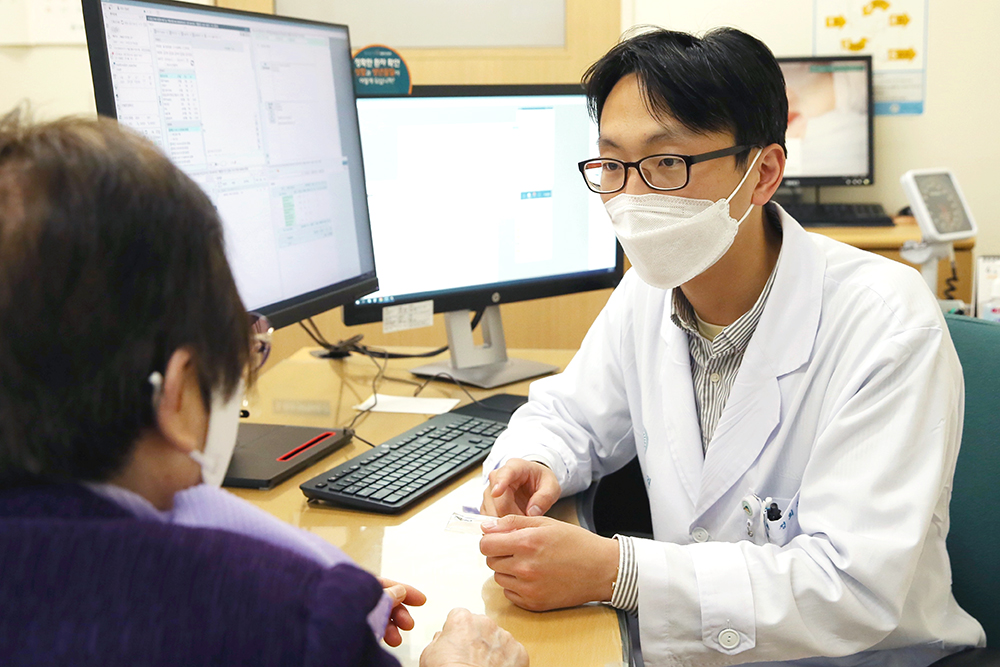-
- Global AMC MENU
- NEWS
- HEALTH
- PEOPLE
- Introduction

▲Professor Heewon Jung of the Division of Geriatrics is consulting a patient who is experiencing frailty
A recent study has unveiled that the level of frailty in one’s mid-60s can serve as a predictive factor for their health condition ten years later.
Led by Professor Heewon Jung of the Division of Geriatrics of Asan Medical Center, a research team analyzed the national health insurance data from 968,885 adults aged 66 who underwent medical examinations between 2007 and 2017. Their objective was to investigate mortality rates and the occurrence of aging-related diseases over a period of up to 10 years (on average 6.7 years), based on the degree of frailty. The team assessed 39 items across five areas, encompassing medical history, health examination, laboratory tests, and mental health. Subsequently, the subjects were then categorized into four groups: healthy, pre-frail, mild frail, and severe frail.
According to the analysis, the annual mortality rate per 100 individuals over a span of 10 years was 0.79 in the healthy group, 1.07 in the pre-frail group, 1.63 in the mild frail group, and 3.36 in the severe frail group. After adjusting these figures for sociodemographic characteristics, it was determined that the severe frail group faced a mortality risk 4.43 times higher than that of the healthy group over the same period.
Furthermore, the annual average incidence of aging-related diseases, such as diabetes, coronary artery disease, heart failure, and falls, was recorded as 0.14 cases in the healthy group, 0.23 cases in the pre-frail group, 0.29 cases in the mild frail group, and 0.45 cases in the severe frail group. The risk of developing disabilities in 10 years was found to be 10.9 times higher in the severely frail group compared to the healthy group. Moreover, the severely frail group exhibited 2.9 times higher risk of heart failure, 2.3 times higher risk of diabetes, and 2.2. times higher risk of stroke when compared to the healthy group. Additionally, incidences of falls, fractures, and coronary artery disease were significantly more prevalent in the severe frail group than in the healthy group.
These research findings were recently published in the ‘JAMA Network Open,’ an esteemed international academic journal published by the American Medical Association.












